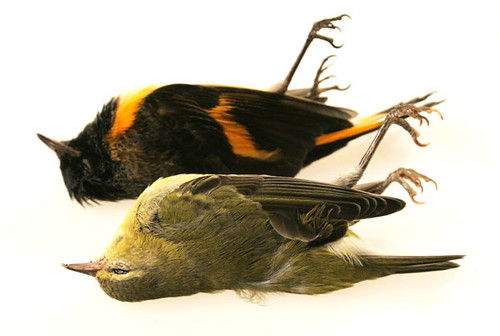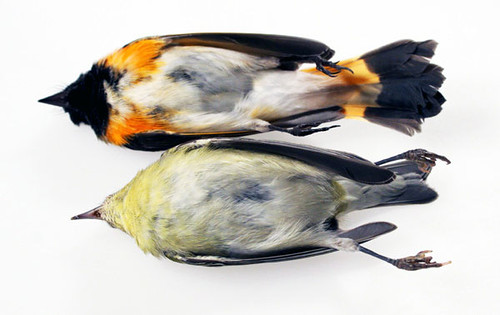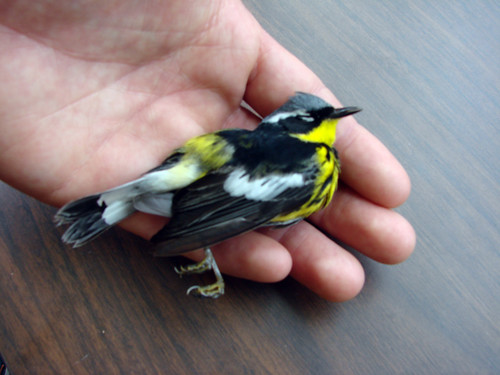In the past several weeks, I’ve been reeling from the deaths of three relatives who played major roles in my childhood, and haven’t had the time or energy to focus on an important bird issue right down in the Twin Cities—the proposed design for the new Vikings stadium. The stadium will be built less than a mile from the Mississippi River, a major migratory pathway for a huge variety of birds, and the design includes over 200,000 square feet of glass, which will most assuredly kill birds by the thousands, or even more, every year.
When the original plans were released, Audubon Minnesota met with the Vikings to work out some ways of reducing the danger. Although the team appeared to be making a good faith effort to modify the design plans, they made the final decision this week to completely ignore the problem. Modified glass would add less than a million dollars to the billion-dollar-plus costs of this taxpayer-funded project—that is, less than a tenth of one percent of the total cost, but a spokesman for the Vikings said that money wasn’t an issue anyway. Their architect apparently thinks a beautiful view of the sky during the few daylight hours of home games every season is a more important issue than thousands of birds crashing into the glass.
Collisions with glass take out from 300 million to a billion birds a year in the United States alone. The species killed are not the abundant ones so conspicuous in the urban landscape such as pigeons, crows, and starlings but, rather, migrating songbirds headed to the tropics, such as tanagers, orioles, and warblers. These migrants spend their days resting and devouring as much food as they can, and their nights flying long distances, when hawks are asleep, temperatures are cooler, and wind speeds lower.
Nocturnal migrants usually rest at sunset and take off well after dark. Birds perched in trees or shrubs instinctively know they have a safe path through the branches if they take off directly toward a bright light, which until the past 140 years or so would have been the moon or stars. Once aloft, if they become disoriented by fog or a low cloud ceiling, flying toward a light always assured them of a safe path to an unobstructed view of the sky. At that point, they use the earth’s magnetism or star patterns to navigate. In either case, their inborn tendency to fly toward a brightly lit area explains why so many are found dead under buildings after heavy migration nights.The brightly lit stadium will disorient and attract a great many birds straight to the glass, especially on foggy nights.
By day, migrating songbirds concentrate near lakes, rivers, and streams, where insects are most abundant. In the Twin Cities, a great many of them are drawn to the vicinity of the Mississippi. Many of those that see trees and sky reflected in the glass of the proposed stadium are likely to crash, too.
Millions of songbirds fly over the Twin Cities each fall and spring, and so a glass-covered football stadium so close to the river is guaranteed to kill large magnitudes of them, by day and by night. More and more people are becoming aware of the huge death toll from collisions with glass every spring and fall, but unfortunately, influential architects seem blind to the situation.
My friend Sharon Stiteler, a very well-known and influential birder in the Twin Cities, along with Audubon Minnesota, just delivered a petition with over 76,000 signatures to Minnesota Governor Mark Dayton, asking him to require the Vikings to use less dangerous materials for the stadium. I signed the petition, and will also be calling his office today (651-201-3400). Our individual voices are pretty insignificant against huge moneyed interests, but one would hope that if we all speak out, our thousands of voices might be heard above the one architect being paid by our taxes. This stadium is supposed to belong to the people whose taxes are paying for so much of it, and we the people of Minnesota value our wildlife as much as our football team. A creative, competent architect would know how to solve this problem. Thousands of dead birds are NOT "aesthetic."


